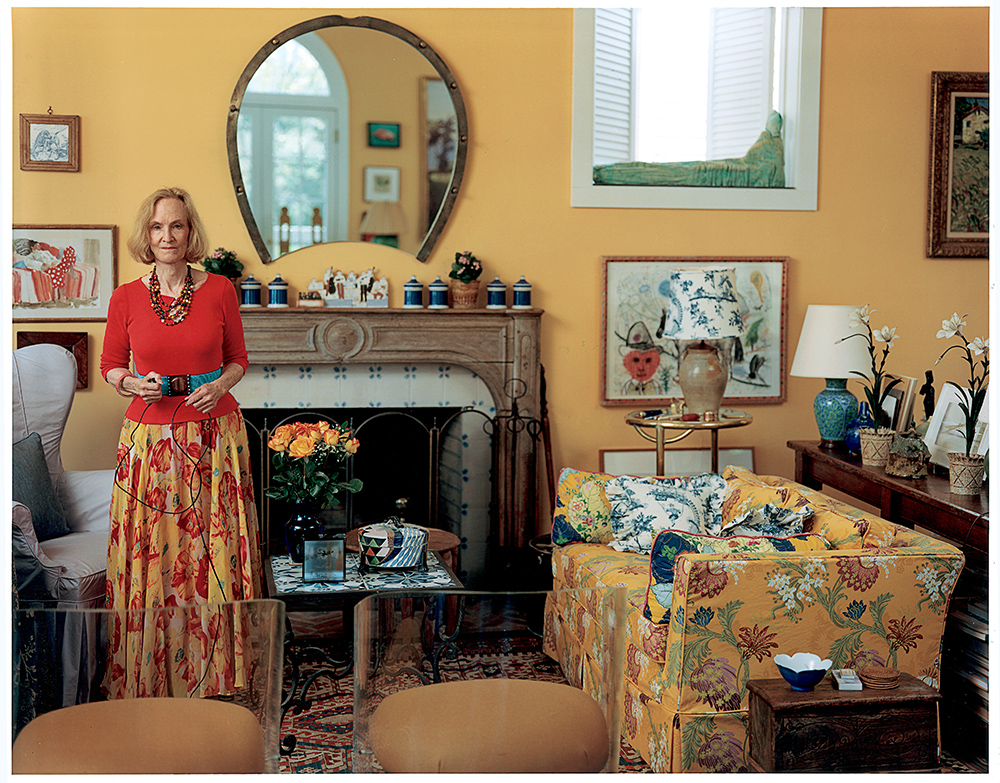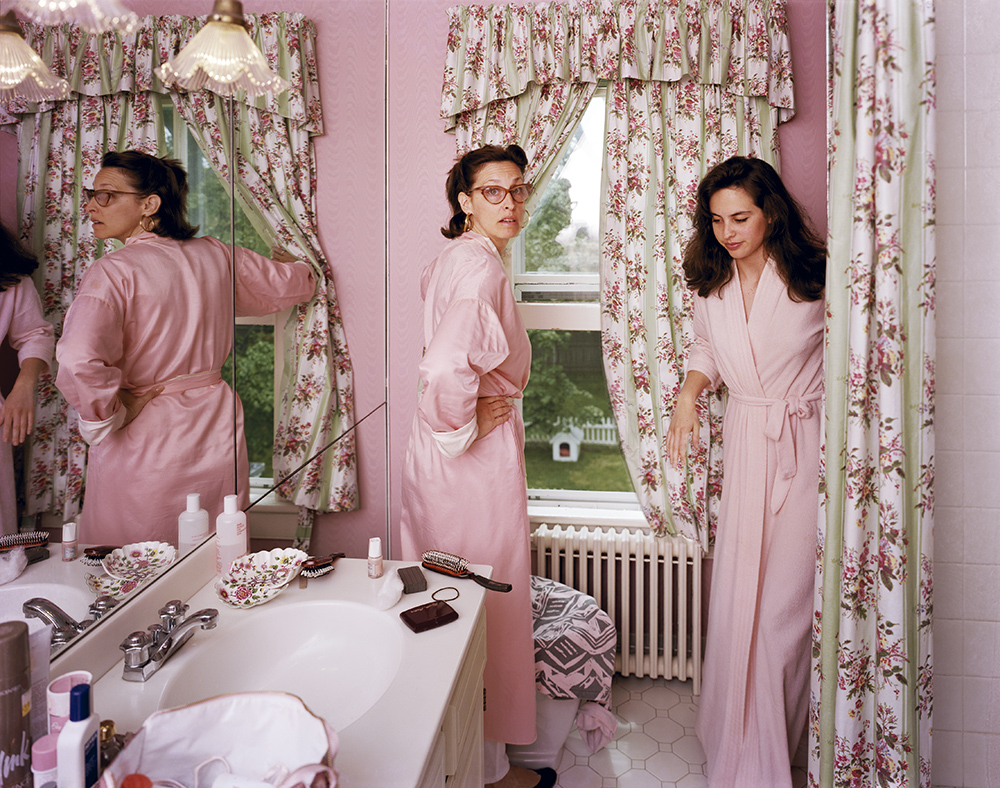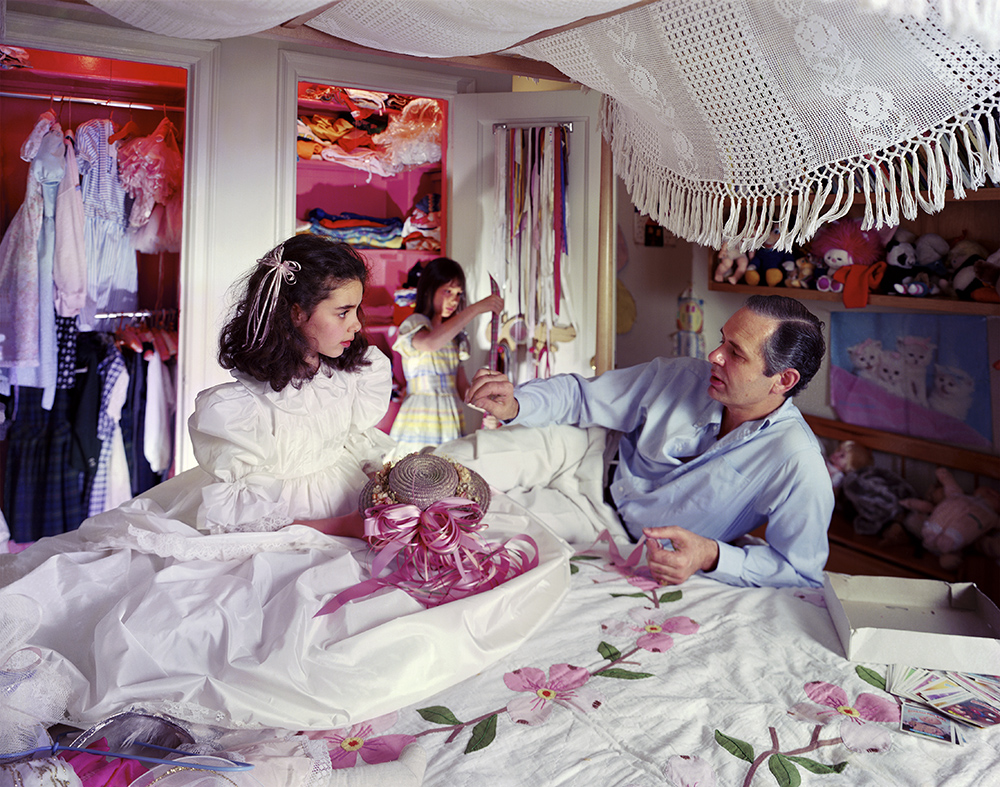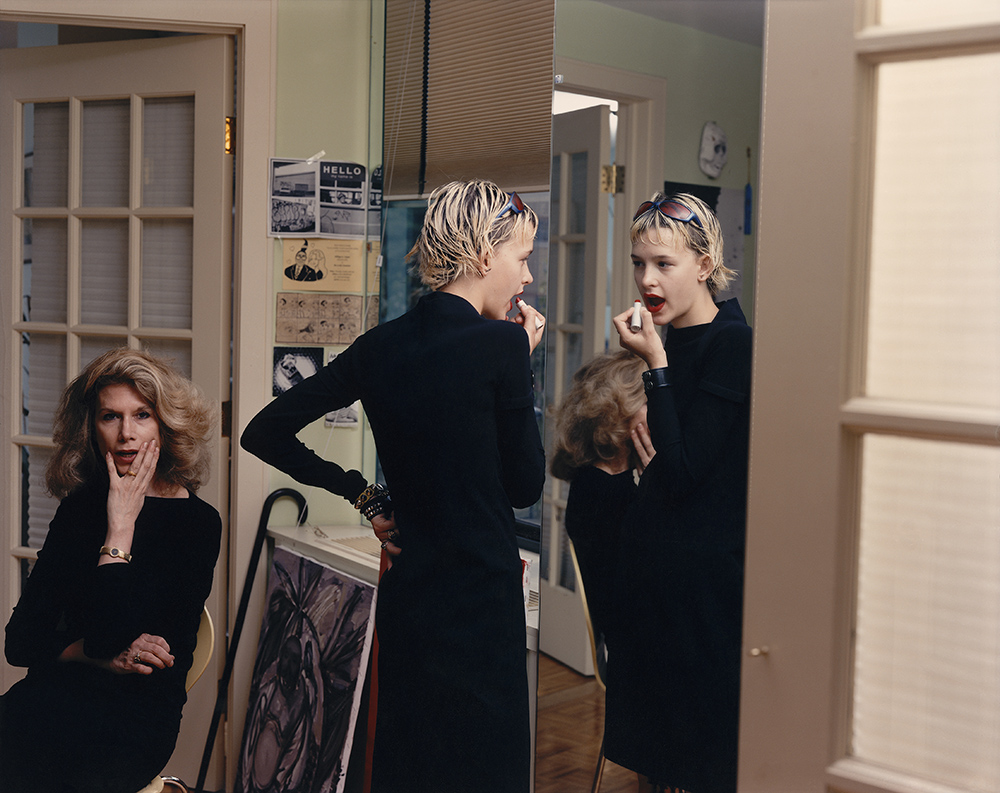For the photographer Tina Barney, proximity to, and membership in, the upper class has come to define her body of work chronicling the life of the patrician set. Her images, taken over some forty years, are at once a choreographed glimpse into the lives of the leisure class and candid meditations upon universal themes of family. Barney’s recently published an eponymous monograph—with an introduction by Peter Galassi, the former curator of photography at the Museum of Modern Art—comes at a time when economic inequality is at the forefront of people’s minds. Here, she reflects on the critical reception of her work, the importance of time in her photographs, and the role of family in creating them.
INTERVIEWER
You’ve noted many times in past interviews that you’ve never consciously set out to photograph the “upper class.” You were, in your words, “photographing family and friends.” How do you respond to those who discuss your work within the context of wealth, of social status?
BARNEY
I never really think about it. It’s the viewer, the writer, the critic, who puts that subject matter on me. It’s almost not interesting for me to talk about it, but then, people are so fascinated by it that I guess it must be interesting. My fascination is with the repetition of traditions and rituals. The idea that families, no matter where they come from, kind of do the same thing. They get up, they make breakfast, they go to school, they come back, they have Christmas, they have Halloween.
INTERVIEWER
Where do your photos fit within the climate of America today versus when you were exhibiting them in the eighties? It seems to me that the eighties embraced wealth, and that that attitude changed after the 2008 financial crisis.
BARNEY
Let’s just say it’s not the tools that are different, it’s the props.
INTERVIEWER
Perhaps, because of the intensive setup involved in shooting on large format, your images possess a tension between the composed and the candid, the staged and the spontaneous.
BARNEY
You got it. They’re kind of sloppy. Really, if you go back and look at images from the eighties, there are so many photographic mistakes that most people wouldn’t keep, and that’s the difference—I would leave the mistakes. I think that’s why they look unpretentious and believable.
INTERVIEWER
Speaking of timing, your photographs seem to exist in this perpetual summer.
BARNEY
That’s because it’s the best time to photograph, right?
INTERVIEWER
You’ve said before that when you first began taking pictures, you photographed what was in front of you—your family. But why have you continued to photograph them?
BARNEY
I felt I hadn’t finished answering a question. It just kept on getting more interesting. The deeper I went, the more interesting it became. It’s like a drug. I just can’t stop. I could go on forever and ever. I could keep photographing. I haven’t finished yet. It just isn’t finished.
INTERVIEWER
How do you see your images connecting with millennials, with the younger generation?
BARNEY
I have absolutely no idea. I hadn’t thought about it. I have a terrible feeling, because I mentor at the School of Visual Arts, that people that age already don’t really care about my photographs. I think they’re interested in things that go fast, and in otherworldly experiences.
INTERVIEWER
If you ask me, Newport, Rhode Island, can be otherworldly, too. Last question—why do you prefer printing your images in such large format?
BARNEY
In my big prints, I want everybody to be able to see the detail of the quality in the pictures. Of course, my photographs aren’t monumental at all when you compare them to the other things happening in photography now. But back in the eighties, it was a big deal. And for me, it was in order to see more. That’s all I wanted to do.
Joseph Akel is a writer based in New York City and San Francisco. A regular contributor to Artforum, Frieze, and ArtReview, among others, he is a Ph.D. candidate in the University of California, Berkeley’s Rhetoric Department.





